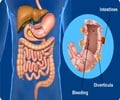Despite prior evidence that body mass index does not work well in adolescents, it is the standard tool used to screen for obesity in both children and adults.

- The body mass index may not be a good indicator to assess body fat in adolescents between the ages of 8 and 17.
- Using BMI percentiles, researchers noted that adolescents are incorrectly diagnosed as overweight 19.4 percent of the time.
- Tri-ponderal mass index estimates body fat more accurately than the traditional BMI in adolescents.
"We found that TMI is both more accurate and easier to use than BMI percentiles. These new findings have the power to potentially change the way we diagnose obesity in children and adolescents ages 8 to 17."
Body Mass Index
Obesity increases the risk of several chronic diseases in adults, including diabetes, cardiovascular disease and cancer. Overweight children are at an even higher risk than adults, and nearly one in six children in the United States is overweight.
Several national and global initiatives are underway to screen and diagnose children who are overweight as a first step in curbing the obesity epidemic and the chronic diseases that follow.
To test BMI accuracy in adolescents, researchers compared body composition data from 2,285 Caucasian individuals ages 8 to 29 who participated in the 1999-2004 U.S. National Health and Nutrition Examination Survey (NHANES).
"BMI is a pretty good tool for determining whether adults are overweight or obese," Peterson said. "But we've always kind of known that it doesn't work as well in children."
Using three different calculations -- stability with age, accuracy in estimating percent body fat and accuracy in classifying adolescents as overweight versus normal weight -- researchers compared BMI to several different obesity indices.
Tri-ponderal mass index
Using BMI percentiles, researchers noted that adolescents are incorrectly diagnosed as overweight 19.4 percent of the time, versus an only 8.4 percent incorrect overweight diagnosis rate for TMI.
- TMI is the best overall body fat index to use in Caucasian adolescents between the ages of 8 and 17.
- TMI better estimates body fat percentage, especially in male adolescents for whom the investigators found BMI to be particularly inaccurate.
- TMI is a better index for diagnosing overweight adolescents than the current BMI percentiles.
- TMI is especially true for lean adolescents, a significant fraction of whom are incorrectly being diagnosed as overweight.
Steven Heymsfield, M.D., one of the team's physician scientists at LSU's Pennington Biomedical Research Center, added that, to make BMI work in children, complicated BMI percentiles called "Z scores" were developed to diagnose overweight status and obesity based on BMI levels specific to a child's age and gender. But the researchers found that using percentiles does not solve BMI's accuracy problems.
Peterson mentioned that percentiles are problematic because they change over time and can become outdated. However, she emphasizes that, even if BMI percentiles were updated to be as accurate as TMI for diagnosing adolescents as lean versus overweight, TMI still inherently estimates levels of body fat in adolescents more accurately than BMI does, while also eliminating the need for complicated percentiles.
"These findings are important," Peterson said. "Many school districts send home report cards labeling adolescents as overweight, and children and adolescents tend to be more vulnerable to weight bias and fat shaming than adults."
Investigators agree that further research is needed to assess the effectiveness of TMI in broader audiences, including wider age ranges and ethnicities.
"We look forward to collaborating with other existing national and global health organizations to analyze additional data for diagnosing weight status among children and adolescents," Peterson said.
"Ultimately, we hope this research lays the foundation for improving the health of adolescents, and we think that down the road TMI will likely replace BMI for children and adolescents."
Reference
- Courtney M. Peterson et al., Tri-Ponderal Mass Index vs Body Mass Index in Estimating Body Fat During Adolescence, JAMA Pediatrics (2017) http://dx.doi.org/10.1001/jamapediatrics.2017.0460.
Source-Medindia















